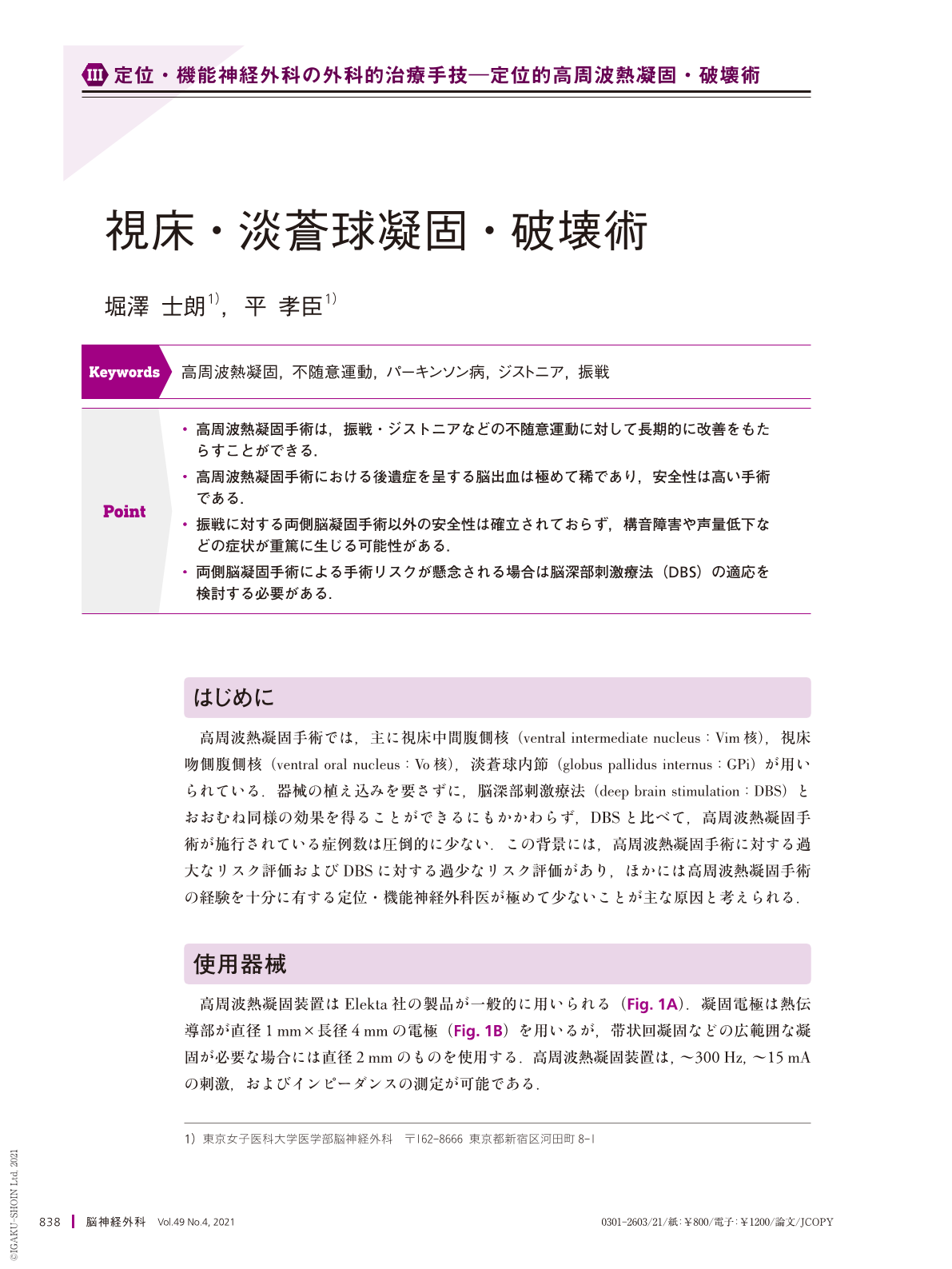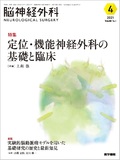Japanese
English
- 有料閲覧
- Abstract 文献概要
- 1ページ目 Look Inside
- 参考文献 Reference
Point
・高周波熱凝固手術は,振戦・ジストニアなどの不随意運動に対して長期的に改善をもたらすことができる.
・高周波熱凝固手術における後遺症を呈する脳出血は極めて稀であり,安全性は高い手術である.
・振戦に対する両側脳凝固手術以外の安全性は確立されておらず,構音障害や声量低下などの症状が重篤に生じる可能性がある.
・両側脳凝固手術による手術リスクが懸念される場合は脳深部刺激療法(DBS)の適応を検討する必要がある.
Radiofrequency lesioning surgery is primarily performed to treat Parkinson's disease, dystonia, and tremor. Its effects are similar to those of deep brain stimulation (DBS). However, Radiofrequency lesioning surgery has not been popularized, possibly due to the over-evaluation of its risks.
The current most available targets for the treatment of movement disorders include ventral intermediate (Vim) nucleus, ventral oral (Vo) nucleus, and globus pallidus internus (GPi). Vim thalamotomy is available for Parkinsonian tremor, essential tremor, dystonic tremor, and other various kinds of tremor, and it is highly effective. Bilateral vim thalamotomy is feasible when properly performed on tiny lesions on the bilateral vim nucleus. Vo thalamotomy is mainly available for focal hand dystonia. The safety profile of bilateral Vo thalamotomy has not yet been established, but it is thought that it may lead to irreversible hypophonia and dysarthria. Pallidotomy is selected for treatment of dystonia and Parkinson's disease. Although unilateral pallidotomy is a safe procedure, it can cause medically refractory parkinsonism including postural reflex disturbance and gait disorder. Delayed infarction on the posterior limb of internal capsule is another major concern associated with pallidotomy and can lead to hemiparesis. Correct understanding is absolutely essential to ensure the safety of radiofrequency lesioning surgery.

Copyright © 2021, Igaku-Shoin Ltd. All rights reserved.


